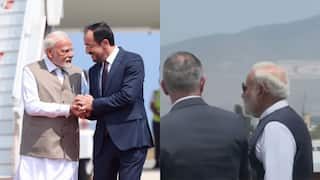
PM Modi's Visit to the Green Line in Cyprus: A Symbol of Turkish Occupation
Prime Minister Narendra Modi's recent visit to the Green Line in Cyprus highlights an important historical and geopolitical context. The Green Line, often referred to as the Buffer Zone, demarcates the island into two parts: the Greek Cypriot south and the Turkish-occupied north. This division has persisted since 1974, when Turkey invaded Cyprus, resulting in a de facto partition and the establishment of the Turkish Republic of Northern Cyprus (TRNC) in 1983. However, the TRNC remains largely unrecognized internationally.
The Green Line serves as a powerful reminder of the ongoing conflict between the communities on the island. It was established to curb the escalating violence between Greek and Turkish Cypriots during the 1960s. The United Nations Peacekeeping Force in Cyprus (UNFICYP) has been monitoring this buffer zone since 1964, emphasizing its critical role in peacekeeping efforts.
Stretching approximately 180 kilometers, the buffer zone varies significantly in width, from mere meters in some areas of Nicosia to several kilometers elsewhere. The enduring division has led to a deep separation between Greek and Turkish Cypriots, who predominantly reside in their respective regions. Despite increasing tensions, numerous initiatives aim to foster reunification and improve relationships between the communities.
Modi's visit underscores the Green Line's significance in the broader context of international diplomacy. As a symbol of the Turkish occupation, it continues to intrigue global audiences and spark discussions about Cyprus's future. As discussions of peace and reconciliation gain momentum, the Green Line remains a pivotal element in shaping these conversations.
For more insights on the Cypriot conflict and geopolitics, you can explore the UN's resource on Cyprus.
